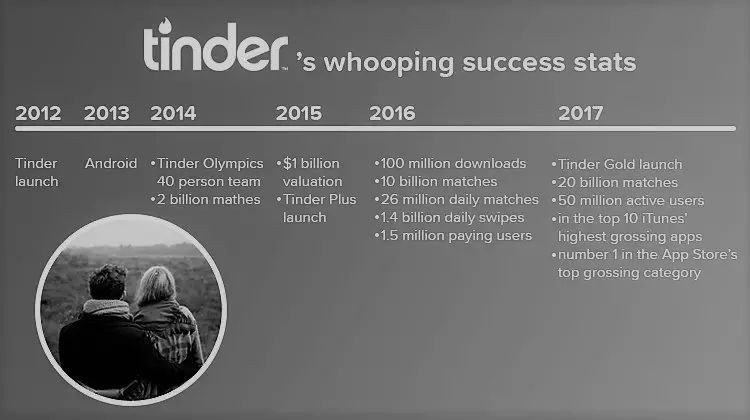Introduction
Get ready to embark on a journey where we unlock the secrets to creating easy-to-navigate websites and crafting an online shopping experience that feels as smooth as gliding on a cloud! In this blog, we’ll dive into the fascinating world of eCommerce navigation and user experience (UX), uncovering the tricks that make your virtual shopping cart super busy.
Imagine strolling through a bustling marketplace, browsing through different stalls filled with treasures. Now, let’s transport that vibrant experience to the digital realm. Our goal is to help businesses understand the art behind eCommerce navigation and UX, ensuring that every click and scroll brings you closer to the perfect purchase without a hitch.
No more feeling like a lost traveler in an online wilderness!
In this blog, we’ll be your trusty compass, guiding you through the levels of website navigation. We’ll explore the best practices, clever strategies, and emerging trends that can turn your online store into a customer’s dream destination.
From intuitive menu designs and effective search functionalities to clear categorization and efficient filtering options, we’ll equip you with the knowledge to create an online shopping experience that’s both seamless and satisfying.
So, fasten your seatbelts and get ready to embark on a delightful adventure of enhancing your eCommerce navigation and UX.
Together, we’ll uncover the secrets that transform ordinary websites into extraordinary online shopping havens.
Let’s make navigating your online store a breeze and leave your customers with smiles on their faces!
What Does Optimizing eCommerce Navigation Mean?
What’s the deal with optimizing eCommerce navigation? Well, think of it as giving your online store a superpower – the ability to make shopping an absolute delight!
When we talk about eCommerce navigation optimization, we’re basically talking about making your website a user-friendly wonderland where customers can effortlessly find what they’re looking for, without getting lost.
Picture this: you’re on a treasure hunt, but instead of searching through a messy room, you’re navigating a website filled with all the goodies you desire.
UX optimization and eCommerce navigation go hand in hand to create an experience that makes the customers want to come back again.
So, when we say we’re optimizing eCommerce navigation, we’re essentially making sure that your online store is easy to navigate, making it a breeze for customers to find their way around.
We’ll sprinkle some magic dust of user-friendly menus, intuitive search bars, and organized categories to create a virtual shopping wonderland that keeps your customers happily exploring and coming back for more.
You Might Be Interested In:
What Are The Aspects of Good eCommerce Navigation?
Let’s unravel the secrets of good eCommerce navigation, where the art of making online shopping a breeze meets the science of creating a delightful user experience (UX). When we talk about eCommerce navigation UX, we’re talking about the clever tricks and techniques that make browsing and finding products on a website as easy as pie.
Think of it like having a super-smart GPS system for your online store. It’s all about making sure your website is a friendly and well-organized space where customers can effortlessly find what they’re looking for.

From simple and clear menus that guide you to the right places to intuitive search bars that understand your desires, it’s all about making the journey from “I want that!” to “Add to cart!” smooth and seamless.
Good eCommerce navigation UX means eliminating those frustrating moments of getting lost in a virtual maze or feeling overwhelmed by too many options. It’s like having a friendly shopkeeper who knows exactly where everything is and helps you find what you need without any hassle.
By keeping things neat, tidy, and easy to find, you create an enjoyable shopping experience that keeps customers coming back for more.
So, when it comes to eCommerce navigation UX, remember that simplicity is key.
Make it easy for your customers to explore, discover, and make their purchases with a smile on their faces. It’s like creating a virtual shopping experience that’s as fun and straightforward as strolling through your favorite store.
Examples of eCommerce Website Navigation
Poor eCommerce Website Navigation Example
Let’s explore some design mistakes to avoid when it comes to website navigation.
- Cluttered Navigation Bar: The website has a navigation bar with an overwhelming number of options, making it difficult to find what you’re looking for.
- Confusing Labels: The categories in the navigation bar are poorly labeled, causing confusion and making it challenging to navigate to specific information or products.
- Lack of Search Functionality: There is no search bar available, making it time-consuming to find desired content or products.
- Disorganized Placement of Links and Buttons: Imagine stumbling upon a website where links and buttons are scattered like confetti at a party thrown by Homer Simpson. With no clear order or organization, it feels like you’re playing a chaotic game of hide-and-seek. Locating what you need becomes an exercise in frustration, leaving you feeling as disoriented as if you were exploring Homer’s wacky online world.
- Ineffective Link Differentiation: Links blend in with the surrounding text, making them hard to spot and resulting in navigation difficulties.
- Non-Mobile-Friendly Design: The website’s navigation is not responsive, making it difficult to navigate on mobile devices and leaving users frustrated.
Remember, learning from examples of poor website navigation can help you avoid these pitfalls and create a user-friendly browsing experience for your own website.
Good eCommerce Website Navigation Example
Here’s an example of a website with good navigation:
- Clear and Concise Navigation Bar: The website features a clean and organized navigation bar, with a limited number of options that are relevant and easy to understand.
- Intuitive Categories: The categories in the navigation bar are clearly labeled and logically grouped, allowing visitors to quickly find what they’re looking for.
- Search Functionality: A prominently displayed search bar is available, enabling users to enter keywords and find specific content or products efficiently.
- Consistent Placement: Links and buttons are consistently placed throughout the website, ensuring a familiar and predictable browsing experience.
- Highlighted Links: Links are visually differentiated, such as being underlined, bolded, or displayed in a different color, making them stand out and easy to identify.
- Mobile-Friendly Design: The website’s navigation is responsive and optimized for mobile devices, ensuring a seamless experience across various screen sizes.
By following these examples of good website navigation, you can create an intuitive and user-friendly browsing experience that helps visitors navigate your website with ease.
Exploring the Building Blocks of Site Navigation

Here are the key building blocks of site navigation:
- Intuitive Menus: Design navigation menus that are easy to understand and navigate, allowing users to quickly find the information they need.
- Logical Page Hierarchy: Establish a clear and logical structure for your website, with well-organized pages and subsections that flow naturally.
- User-Friendly Design: Ensure your website is visually appealing and easy on the eyes, with legible fonts, clear buttons, and intuitive icons.
- Clear Call-to-Action Buttons: Use prominent and descriptive buttons to guide users towards desired actions, such as making a purchase or signing up for a newsletter.
- Responsive Design: Optimize your website for different devices, ensuring it looks and functions seamlessly on desktops, laptops, tablets, and smartphones.
- Search Functionality: Implement a search feature that allows users to quickly find specific content or products, saving them time and frustration.
- Breadcrumb Navigation: Include breadcrumb trails that show users their current location within the website’s structure, making it easier for them to navigate back and forth.
- User Testing and Feedback: Continuously gather feedback from users to identify any navigation pain points and make necessary improvements.
By mastering these building blocks of site navigation, you can create a user-friendly website that enhances the browsing experience and keeps visitors coming back for more.
Best Practices To Improve eCommerce User Experience

Keep Navigation Simple
Streamlining your navigation by using clear and concise menu labels that align with user expectations is essential for providing an intuitive browsing experience. When users visit your website, they should be able to quickly understand the available options without confusion or frustration. By utilizing familiar and straightforward menu labels, you reduce cognitive load and allow users to navigate your website effortlessly. Avoid using technical jargon or overly creative labels that might confuse users and opt for simplicity and clarity instead.
Prioritize Important Categories
Placing high-demand categories prominently in the navigation menu is a strategic approach to help users find popular products or content easily. By analyzing user behavior and identifying the most sought-after categories, you can prioritize them in the navigation menu. This way, users can quickly locate and access the items they’re most interested in. This approach enhances user satisfaction and saves their time by reducing the effort required to find desired products or information. It’s important to periodically evaluate user preferences and adjust the prioritization of categories based on current trends and customer feedback.
Use Dropdown Menus Sparingly
While dropdown menus can be useful for organizing subcategories, it’s important to use them sparingly to prevent overwhelming users with too many options at once. When implementing dropdown menus, consider the depth and complexity of your website’s hierarchy. Aim for a balance between categorization and simplicity. Complex dropdown menus with multiple levels can make it challenging for users to navigate and find what they’re looking for. Instead, consider alternatives such as mega menus, which display a comprehensive and organized structure without overwhelming users with an excessive number of options in a single dropdown.
Optimize for Mobile
With the increasing use of smartphones and tablets for browsing, ensuring your navigation is mobile-friendly is crucial. Mobile optimization involves employing responsive design techniques and touch-friendly elements that adapt to smaller screens. The navigation menu should be easily accessible, with buttons or icons that can be easily tapped or swiped. Simplify the menu for mobile devices by focusing on the most important categories and using collapsible menus or hamburger icons to save screen space. By providing a seamless mobile navigation experience, you cater to the needs of on-the-go users and increase engagement with your website.
Highlight Current Page
Visual cues that highlight or underline the user’s current location within the website’s navigation hierarchy are invaluable for enhancing user experience. When users explore your website, it’s essential to provide them with a clear sense of their location to maintain context. By visually indicating the active page or section in the navigation menu, users can easily comprehend their progress and navigate within the website more effectively. This reduces the chances of getting lost or disoriented, improving overall usability and satisfaction.
Provide Breadcrumb Navigation
Including breadcrumb trails in your navigation is an effective way to help users understand their current position and navigate backward if needed. Breadcrumbs display a hierarchical trail of links, showing users the path they’ve taken to reach the current page. This feature allows users to easily backtrack and explore other sections of the website without relying solely on the navigation menu. Breadcrumb navigation enhances user control and flexibility, particularly in websites with deep hierarchies or extensive content. It also improves the overall user experience by providing a sense of orientation and offering alternative navigation paths.
Test and Iterate
Conducting user testing and collecting feedback are crucial steps in identifying navigation issues or pain points and making necessary improvements. User testing involves observing how individuals interact with your website’s navigation, gathering their feedback, and analyzing their behavior. By conducting usability tests and obtaining qualitative and quantitative data, you can identify areas that cause confusion, navigation obstacles, or inefficiencies. Use this feedback to iterate and refine your navigation design, aiming for continuous improvement and better alignment with user expectations and preferences.
Monitor Analytics
Regularly reviewing website analytics provides valuable insights into user behavior and helps identify areas for navigation optimization. Analyzing metrics such as click-through rates, bounce rates, and time spent on pages can reveal patterns and trends related to user navigation. By understanding how users interact with your navigation menu, you can identify potential issues, popular or underutilized sections, and areas where users may encounter difficulties. This data-driven approach allows you to make informed decisions regarding navigation improvements, ultimately enhancing the user experience and increasing engagement.
Simplify Checkout Navigation
Streamlining the checkout process by reducing steps and ensuring a clear and intuitive flow from cart to completion is crucial for minimizing cart abandonment and improving conversion rates. By simplifying the navigation during the checkout process, you eliminate unnecessary distractions and guide users seamlessly through each step. This includes reducing the number of form fields, providing clear progress indicators, and minimizing the need for users to backtrack or make additional selections. A clear and intuitive checkout navigation enhances user confidence, reduces frustration, and encourages them to complete their purchase.
Limit the Number of Menu Items
Avoid overwhelming users with an excessive number of menu items, as a cluttered navigation menu can confuse and frustrate visitors. Instead, keep the menu focused and concise by showcasing only the most relevant categories. Determine the key sections that align with your website’s purpose and target audience, and prioritize those. By presenting a limited number of menu items, you make it easier for users to quickly identify their desired category or content and reduce decision fatigue. A focused navigation menu improves user satisfaction, streamlines the browsing experience, and encourages users to explore further.
By implementing these strategies and considering the accompanying explanations, you can effectively optimize your website’s navigation to provide a user-friendly and seamless browsing experience.
FAQs – Most Frequently Asked Questions
Q: Why is UX Important in eCommerce Navigation?
A: UX is crucial in eCommerce navigation as it impacts user satisfaction, engagement, and conversions.
Q: Why Choose Huptech Web To Enhance eCommerce Navigation and UX Experience?
A: Huptech Web specializes in enhancing eCommerce navigation UX, providing tailored solutions to improve user experience and drive conversions.
Q: How Can I Improve eCommerce Navigation UX?
A: Focus on simplicity, intuitive labels, logical categorization, visual cues, mobile optimization, and user feedback.
Q: What Are Best Practices For Optimizing eCommerce Navigation UX?
A: Responsive design, predictive search, filters/sorting options, fast page loads, and breadcrumb navigation.
Q: How Can I Ensure Seamless Mobile Navigation?
A: Prioritize mobile-first design, touch-friendly elements, usability testing, and adherence to mobile UX best practices.
Q: How Does Website Performance Affect eCommerce Navigation UX?
A: Slow-loading pages frustrate users, so optimize image sizes, minify files, leverage caching, and monitor performance.
Q: How Can I Make eCommerce Navigation Accessible To All Users?
A: Follow accessibility guidelines, provide alt text, enable keyboard navigation, ensure color contrast, and test with assistive technologies.
Wrapping Up
In conclusion, mastering the art of seamless eCommerce navigation and optimizing the user experience (UX) is essential for the success of any online store.
By implementing the best practices and strategies discussed in this blog, such as intuitive menu design, logical categorization, mobile optimization, and user feedback integration, you can create an exceptional navigation experience for your visitors.
Remember, the key is to prioritize simplicity, clarity, and user-friendliness. By making it easy for your customers to find what they’re looking for, you’ll enhance engagement, increase conversions, and build trust in your brand.
So, take the time to evaluate your eCommerce navigation and make any necessary improvements. Continuously monitor and test your navigation’s performance, gather user feedback, and stay up-to-date with UX trends to ensure that your website remains a seamless and enjoyable destination for your customers.
With a well-optimized eCommerce navigation UX, you’ll not only provide a delightful experience for your visitors but also set your online store up for long-term success in the competitive world of eCommerce.
Hey, don’t be shy! Leave a comment on this blog so Huptech Web can recommend more funny and informative content for you.
Plus, we all know the best part of reading articles is scrolling down to the comment section. So, come on, let’s have some fun!
Source link






Leave a Reply